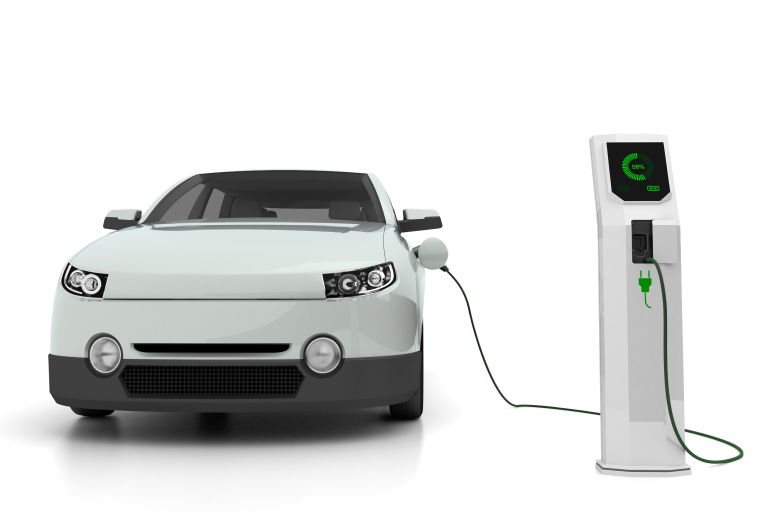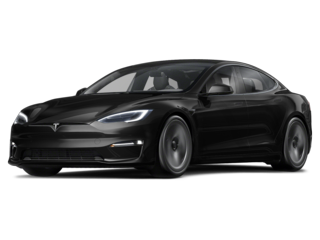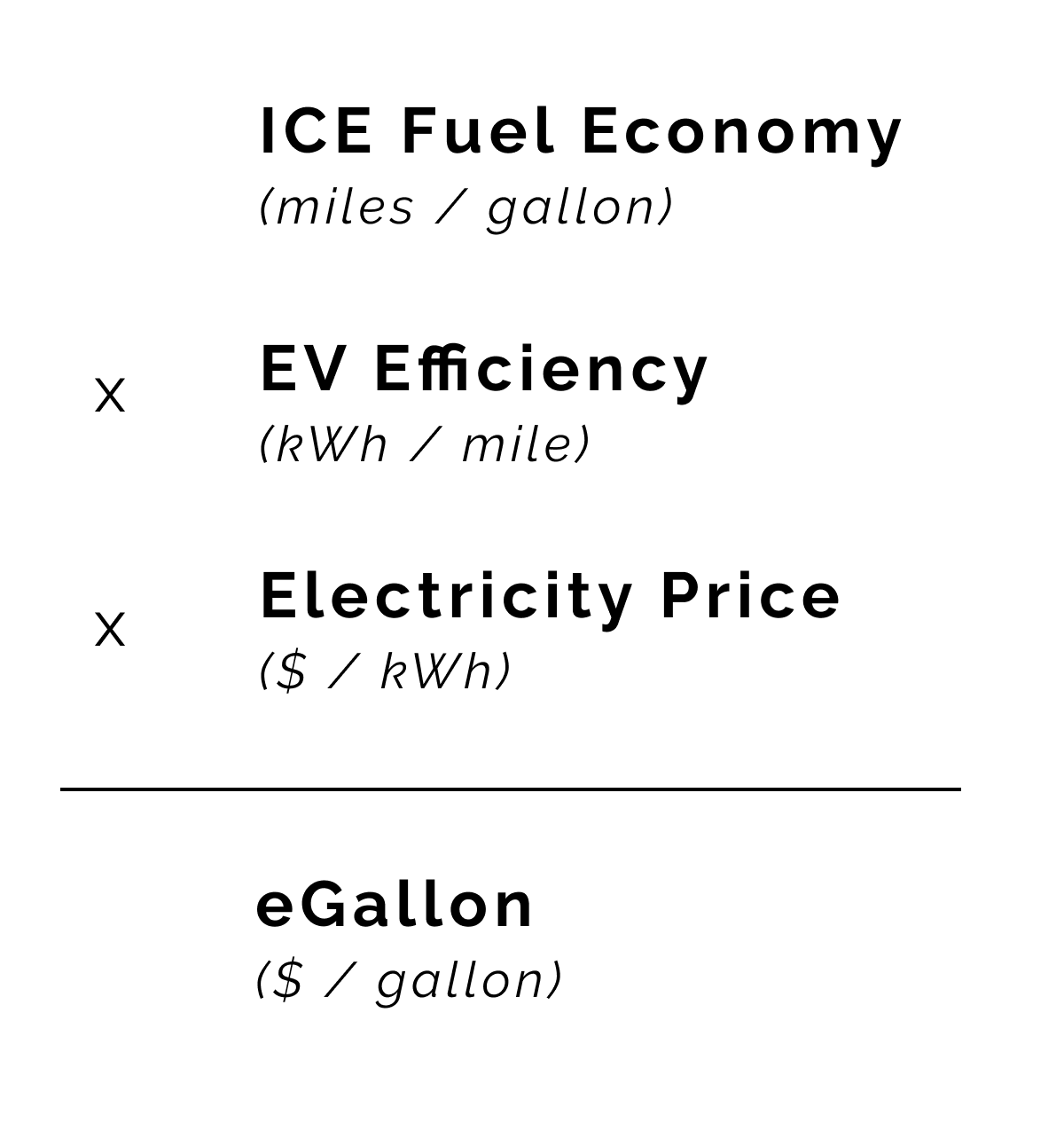- Quick Start
- EV Articles
- Tools + Calculators
- All Resources
- EV Cost Calculator
- Find A Charger
- Plan A Trip
- Emissions Calculator
- Incentives Calculator
- Links
- Share Feedback
There are over 50,000 public chargers across the country and more being added all the time.



Assumptions: Data is based on full-battery electric vehicles with model years of 2021 and newer. Results are based on charging at home.
Data Sources: FuelEconomy.gov for vehicle efficiency; U.S. Energy Information Administration for average residential electricity rates by state; U.S. Department of Energy for eGallon formula; AAA.com/gas for average gas prices by state. Results are based on the most recent data available in February 2023.
Disclaimer: The information provided is for educational purposes only. Actual costs will vary over time and by state.
 It is important to understand that eGallon results are based on electricity prices and vehicle efficiency. This means you will get different results when comparing different EVs and gas-powered vehicles. It also means you will get different results depending on where you live because average residential electricity prices vary by state.
To make eGallon costs more accessible, we have setup our calculator to automatically calculate results based on average retail residential electricity prices for each state. We use data from the U.S. Energy Information Administration (EIA), which provides monthly data with a three-month lag. For example, this tool was original created in February 2023, which means the latest electricity rates available at the time were from November 2022.
We also simplified the process by categorizing vehicles according to their class. This helps us ensure we are making fair comparisons between vehicles. For example, eGallon prices will look cheaper when comparing a very efficient EV sedan with a gas-guzzling pick-up truck. We pull vehicle class data from FuelEconomy.gov. We also use FuelEconomy.gov as a data source for vehicle efficiency (miles per gallon for gas-powered vehicles and kWh / mile for EVs).
Note 1: We combined vehicle classes together where it made sense. For example, the compact sedan class in our calculator includes subcompact and mini compact vehicles. Similarly, we group small and standard pickup trucks into a single pickup truck category in our calculator.
Note 2: You may notice that smaller, more efficient EVs have a higher eGallon price than larger, less efficient EVs. For example, compact EV sedans have a higher eGallon price compared to EV pickup trucks. This is because the efficiency improvements gained in switching from an average gas-powered compact sedan to average compact EV sedan are less than switching from an average gas-powered pickup truck to an average EV pickup truck. Compact EV sedans are on average 270% more efficient than gas-powered compact sedans. EV pickup trucks are on average 274% more efficient than gas-powered pickup trucks.
It is important to understand that eGallon results are based on electricity prices and vehicle efficiency. This means you will get different results when comparing different EVs and gas-powered vehicles. It also means you will get different results depending on where you live because average residential electricity prices vary by state.
To make eGallon costs more accessible, we have setup our calculator to automatically calculate results based on average retail residential electricity prices for each state. We use data from the U.S. Energy Information Administration (EIA), which provides monthly data with a three-month lag. For example, this tool was original created in February 2023, which means the latest electricity rates available at the time were from November 2022.
We also simplified the process by categorizing vehicles according to their class. This helps us ensure we are making fair comparisons between vehicles. For example, eGallon prices will look cheaper when comparing a very efficient EV sedan with a gas-guzzling pick-up truck. We pull vehicle class data from FuelEconomy.gov. We also use FuelEconomy.gov as a data source for vehicle efficiency (miles per gallon for gas-powered vehicles and kWh / mile for EVs).
Note 1: We combined vehicle classes together where it made sense. For example, the compact sedan class in our calculator includes subcompact and mini compact vehicles. Similarly, we group small and standard pickup trucks into a single pickup truck category in our calculator.
Note 2: You may notice that smaller, more efficient EVs have a higher eGallon price than larger, less efficient EVs. For example, compact EV sedans have a higher eGallon price compared to EV pickup trucks. This is because the efficiency improvements gained in switching from an average gas-powered compact sedan to average compact EV sedan are less than switching from an average gas-powered pickup truck to an average EV pickup truck. Compact EV sedans are on average 270% more efficient than gas-powered compact sedans. EV pickup trucks are on average 274% more efficient than gas-powered pickup trucks.I drive a Chevy Bolt and my wife drives the Volvo XC60 Recharge plug-in hybrid. We have two level 2 chargers in our garage, and we both do most of our charging at home. Refueling in an EV is a different mindset. When you have a gas engine, you only fill up when it’s low. With an EV, I plug in every night when I come home. When I come back in the morning, it’s fully charged. I can also tell the car my desired charging level and when to start and stop charging.
I occasionally use public charging. There are two level 2 public chargers my town that I’ll use, for example, when I’m at my kid’s games. I use DC fast charging on occasion when traveling longer distances.
It takes several hours to charge the car using level 2 charging, which isn’t great for long trips, but I don’t use my EV to drive long distances.